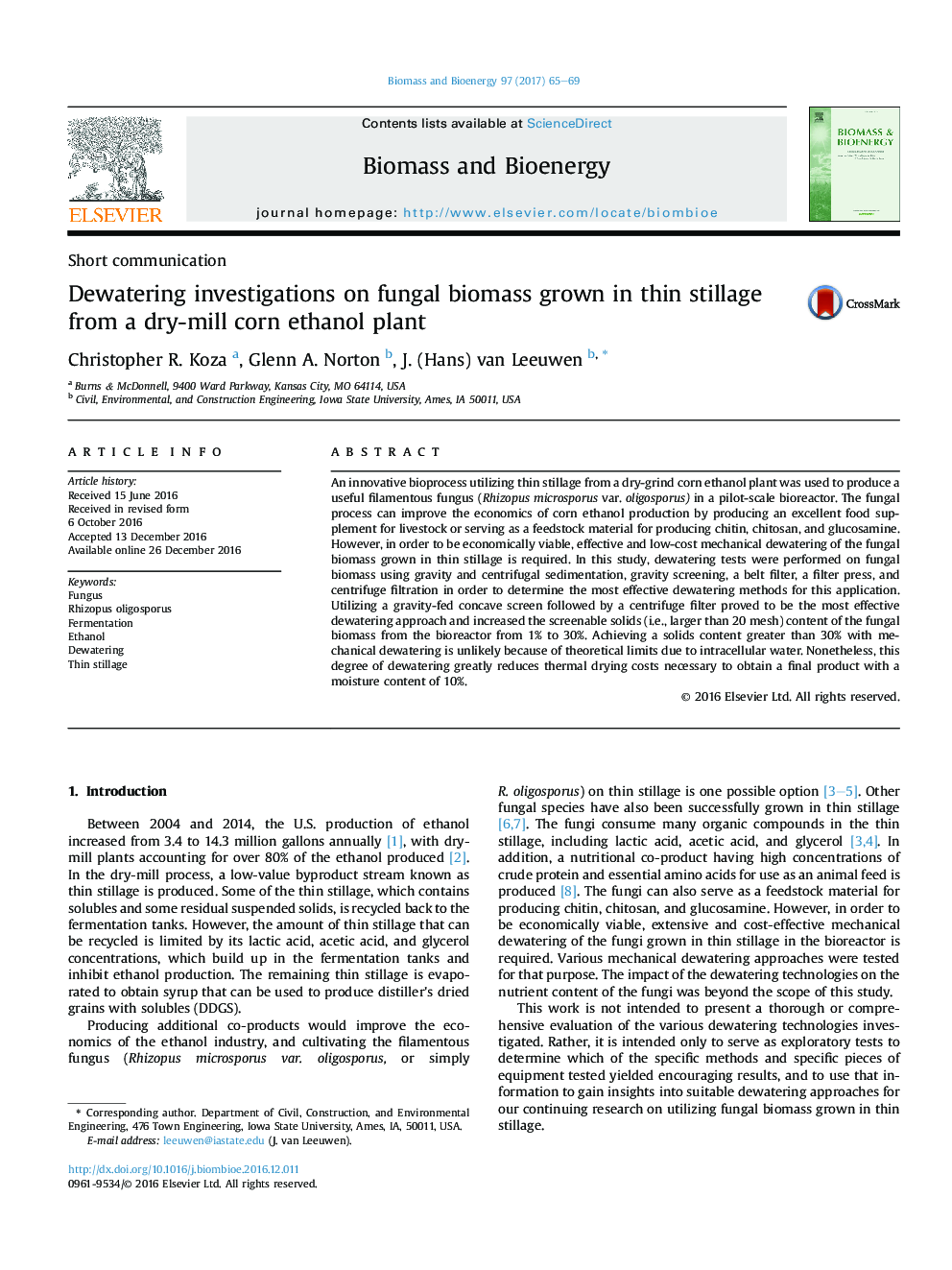| Article ID | Journal | Published Year | Pages | File Type |
|---|---|---|---|---|
| 4996278 | Biomass and Bioenergy | 2017 | 5 Pages |
â¢Fungal biomass grows prolifically in thin stillage from ethanol production.â¢The fungal density and compressibility make many dewatering approaches ineffective.â¢Gravity screening followed by centrifugal increased the solids content from 1% to 30%.
An innovative bioprocess utilizing thin stillage from a dry-grind corn ethanol plant was used to produce a useful filamentous fungus (Rhizopus microsporus var. oligosporus) in a pilot-scale bioreactor. The fungal process can improve the economics of corn ethanol production by producing an excellent food supplement for livestock or serving as a feedstock material for producing chitin, chitosan, and glucosamine. However, in order to be economically viable, effective and low-cost mechanical dewatering of the fungal biomass grown in thin stillage is required. In this study, dewatering tests were performed on fungal biomass using gravity and centrifugal sedimentation, gravity screening, a belt filter, a filter press, and centrifuge filtration in order to determine the most effective dewatering methods for this application. Utilizing a gravity-fed concave screen followed by a centrifuge filter proved to be the most effective dewatering approach and increased the screenable solids (i.e., larger than 20 mesh) content of the fungal biomass from the bioreactor from 1% to 30%. Achieving a solids content greater than 30% with mechanical dewatering is unlikely because of theoretical limits due to intracellular water. Nonetheless, this degree of dewatering greatly reduces thermal drying costs necessary to obtain a final product with a moisture content of 10%.
Graphical abstractDownload high-res image (432KB)Download full-size image
